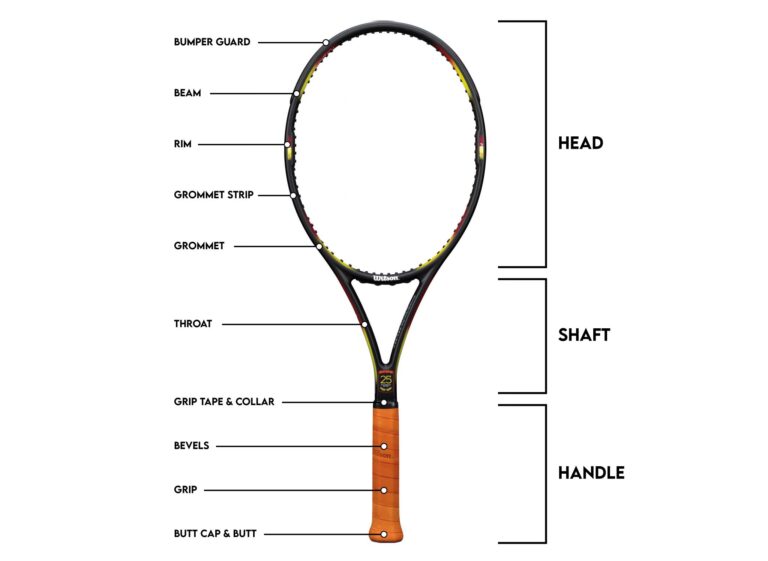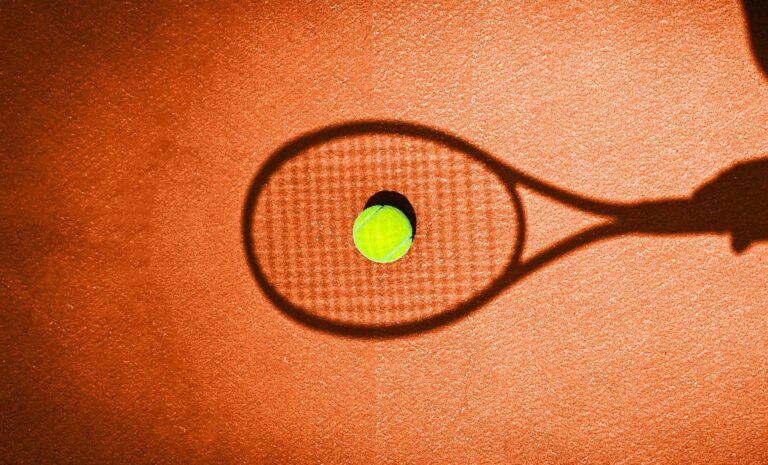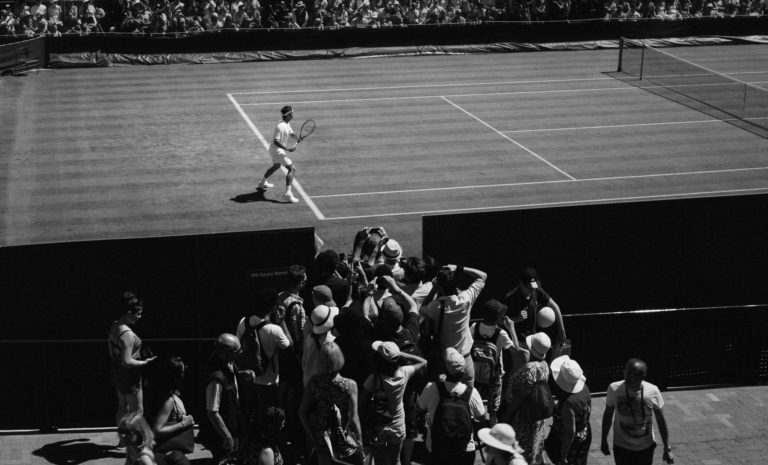Tennis is a complex sport with a variety of moves and different types of tennis shots. Understanding all of them is the first step in mastering the game, so we’ve put together a guide to talk you though each and every one of them!
The Different Types of Tennis Shots
Generally speaking, tennis shots fall into five categories:
- Groundstrokes (forehand and backhand)
- Serve
- Return
- Volley
- Specialty shots
Forehand
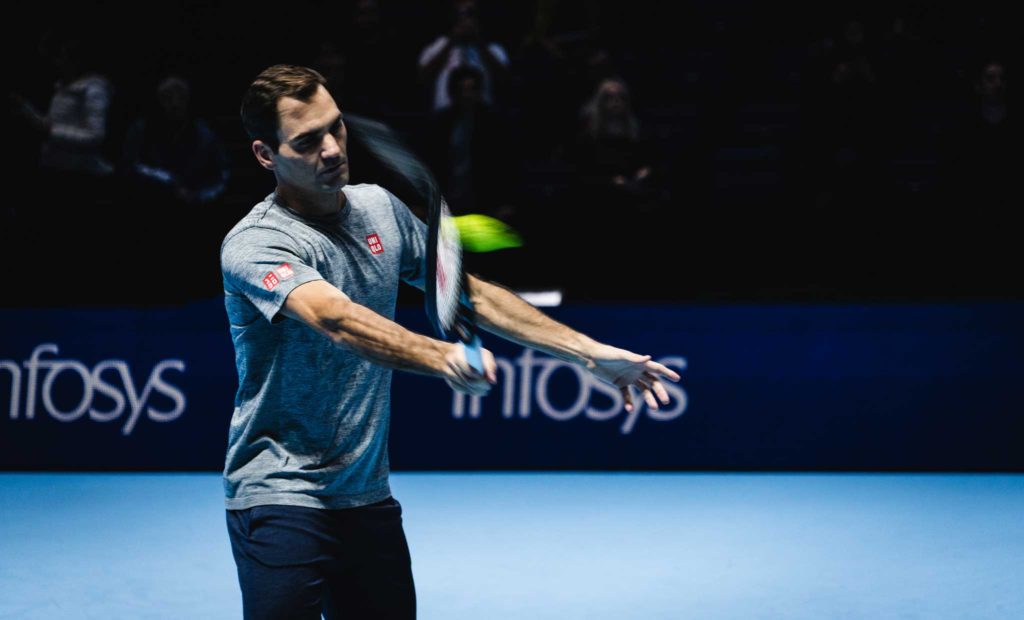
The forehand is one of the most important shots in tennis and is often the first tennis stroke that a player will learn. A forehand is a groundstroke performed on the players dominant/preferred side (if you are right-handed, your forehand will be on the right side of your body, and the other way around if you’re a left-handed player). It’s also often considered to be a player’s strongest and more powerful groundstroke, used to be more aggressive and dictate play on court.
Players generally use one of three different forehand grips: the Eastern grip, the Semi-western grip or the Western grip. Each grip has its advantages and disadvantages and has a huge impact on the amount of power and spin that a player can generate on their forehand. A forehand can also be hit as a flat forehand, a topspin forehand or a slice forehand.
Backhand
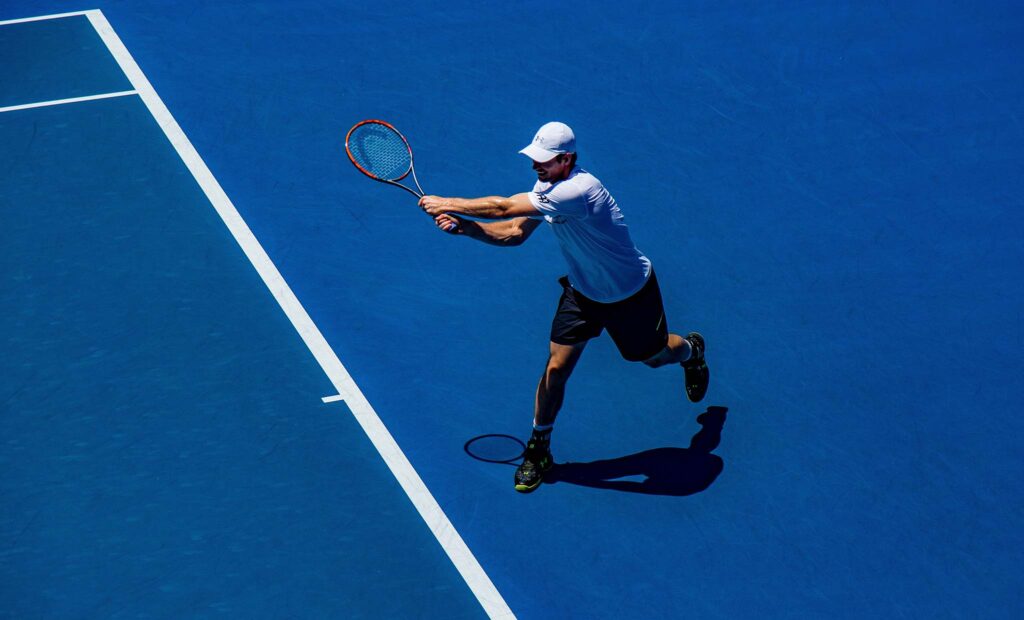
The backhand is the groundstroke hit on the non-dominant side of the body and is often considered a more defensive shot. However, some players including the likes of Novak Djokovic, Andy Murray and Stan Wawrinka, have made it on of their stronger groundstrokes and their greatest weapon on court.
There are two main variations of the backhand: the one-handed backhand and the two-handed backhand.
The one-handed backhand was extremely common throughout the 20th century and is considered the somewhat more ‘traditional’ shot. However, it also a slightly more difficult shot to master and take advantage of. These days, the two-handed backhand is far more popular at all levels of the game and is now considered to be a more reliable and effective shot, particularly as placing two hands on the racket can be very helpful in dealing with heavier shots in defensive situations.
Like the forehand, the backhand can also be hit as a flat backhand, topspin backhand or slice backhand.
Serve

The serve is often considered one of the most difficult tennis shots to master as it requires a great deal of technique and timing. The serve is the shot used to start every point during a match. At the beginning of each point, a player will attempt to perform a serve by tossing the ball in the air and hitting it cross court into the service box on the other side of the net. If the player misses the first serve, they will get the chance to perform a second serve. If they miss both, this will be classed as a double fault and the point is conceded to the opponent.
Return

The return is the shot hit by a player in response to their opponent’s serve. It’s simply a variation of a groundstroke and involves hitting a forehand or backhand depending on the direction of the opponent’s serve. However, what makes a return difficult is the speed of the opponents serve and not knowing where exactly the opponent is going to hit the ball. With that in mind, players sometimes used a slice return to simply chip the ball back into play and neutralise the opponent’s serve.
Volley
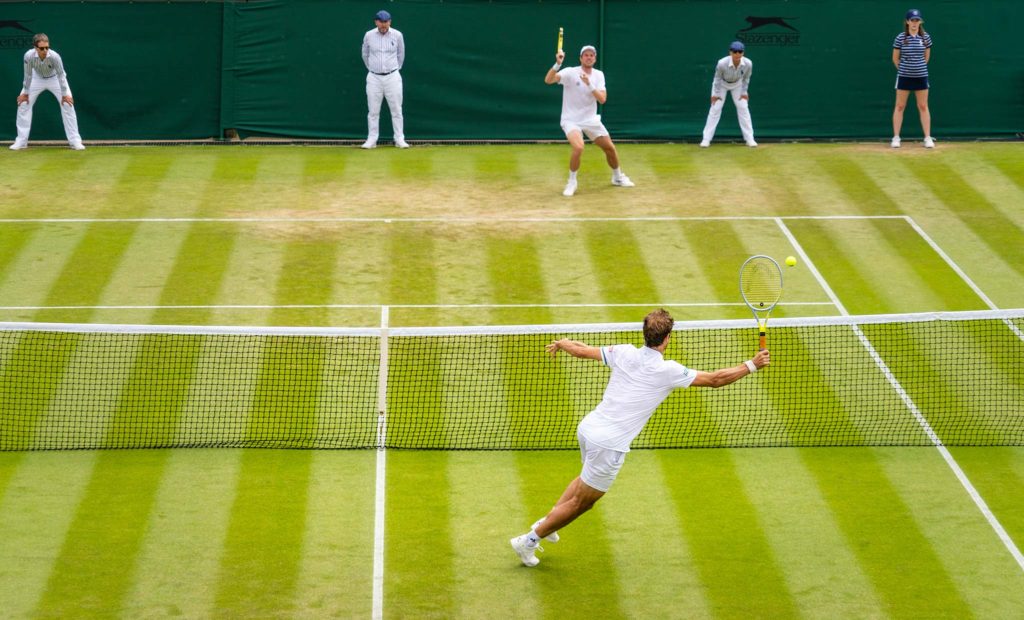
The volley is a shot that involves hitting the ball before it bounces on the court and is typically played at the net or when approaching the net. It’s a shot used to put pressure on the opponent by speeding up play or as a winning shot to the end the point.
Much like groundstrokes, a volley can be hit as either a forehand volley (on the player’s dominant side) or backhand volley (on the non-dominant side). However, volleys are most often hit with a continental grip using only one hand on either side. That being said, beginner level players are sometimes encouraged to use two hands on the backhand volley as it helps provide a little extra support when dealing with stronger shots from opponent.
Specialty Shots
As well as the basic shots in tennis, there are also several specialty shots which are used less frequently, but are still a vital part of the game.
Overhead Smash
The overhead smash, as the name suggests, is a shot hit over the height of the player’s head and the motion is very similar to the motion involved in hitting a serve. An overhead smash is often a shot used to finish a point and can either be hit after the ball bounces or before it bounces, which is much more difficult to time correctly.
Passing Shot
The passing shot is a variation of a groundstroke used to pass an opponent when they have approached the net. More often than not, it’s hit when the player is stretched and on the run, making it all the more impressive when it works.
Approach Shot
The approach shot is another variation of a groundstroke that is used when approaching the net. It’s usually an aggressive topspin forehand or backhand hit to the ooponent’s weakness in an effort to set up a volley at the net.
Drop Shot
The drop shot is another specialty shot that involves using a slice forehand or backhand to drop the ball short in the court. Depending on how good the drop shot is, it can be a winning shot or simply a shot used to bring the opponent to the net.
Lob
The lob is a high, loopy shot hit over the top of an opponent. Usually, it’s played as a defensive shot when the opponent is attacking and has approached the net, though is can also be used as an offensive shot when hit with topspin after bringing the opponent forward with a drop shot.
Half Volley
The half volley is a shot hit very quickly after the ball bounces, usually when approaching the net but not getting to the volley in time or as a reaction shot when a player doesn’t have enough time to hit a full groundstroke.
Tweener
The tweener is a specialty shot very rarely seen in tennis, making it all the more impressive when a player performs it successfully. A tweener is a shot in which the player hits the ball between their legs, usually after being lobbed and facing away from the court. It’s often considered a defensive shot and last-ditch effort to keep the ball in the court, though it does have an element to surprise to it and catch the opponent off guard.
Underarm Serve
The underarm serve is a variation of a serve that involves hitting a low ball over the net instead of tossing the ball up and hitting a traditional serve. While it’s rare, it has become more popular in recent years thanks to the likes of Nick Kyrgios and Alexander Bublik, who use it as a surprise shot to catch their opponents off guard. It’s particularly effective when the opponents stands far behind the baseline when returning serve.
SABR - Sneak Attack Backhand Return
The SABR (Sneak Attack Backhand Return, also sometimes called the Sneak Attack By Roger), is a trick shot made popular by Roger Federer and involves hitting a return of serve very early after the serve with a short backhand flick, much like a half volley. It’s extremely difficult to perform given the pace of the serve, but can be very effective in taking time away from the opponent after their serve.
And that’s it. Mastering the basic shots is a fundamental part of the game, but learning how to hit every tennis shot can really take your game to new heights!

